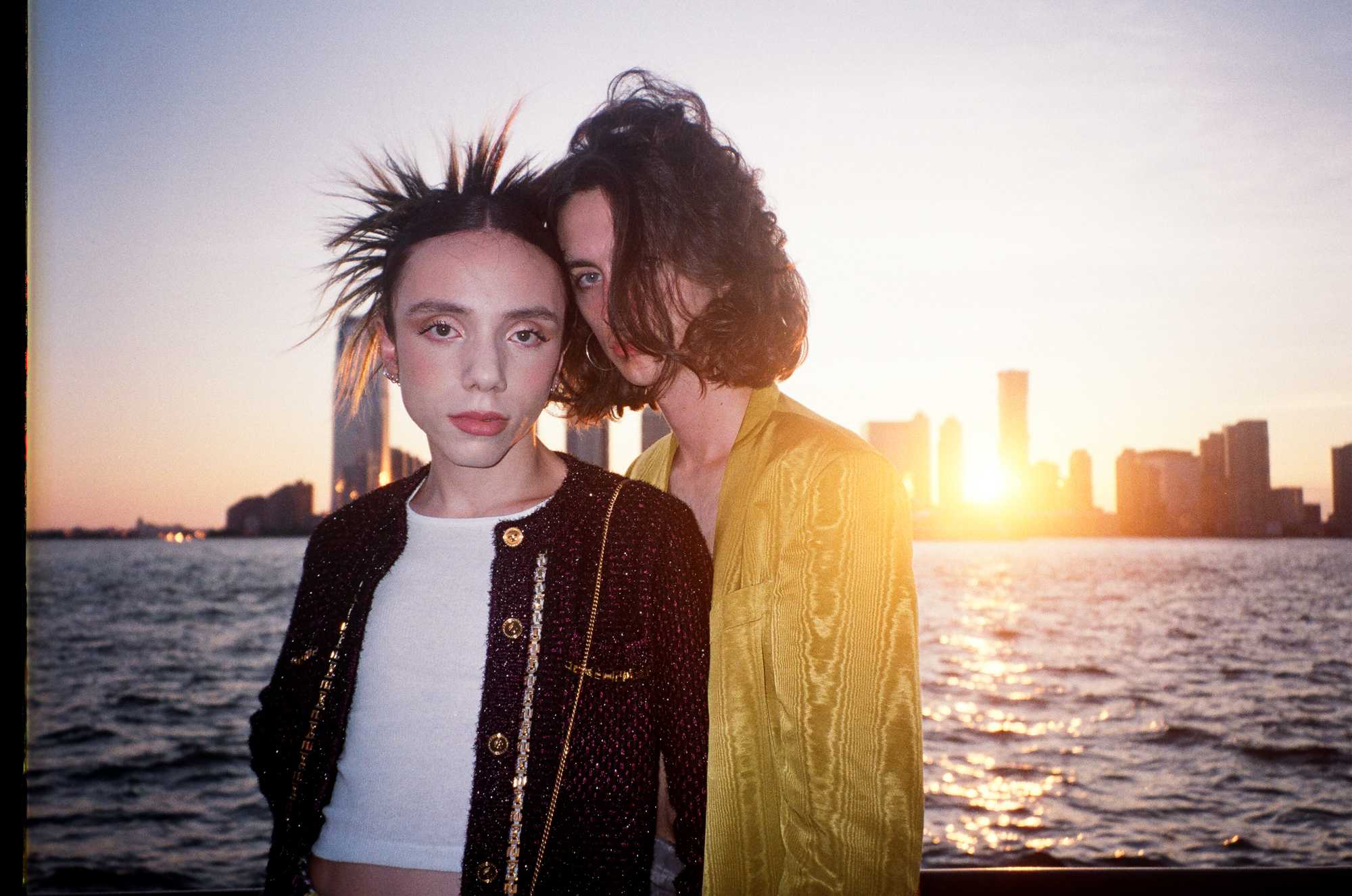
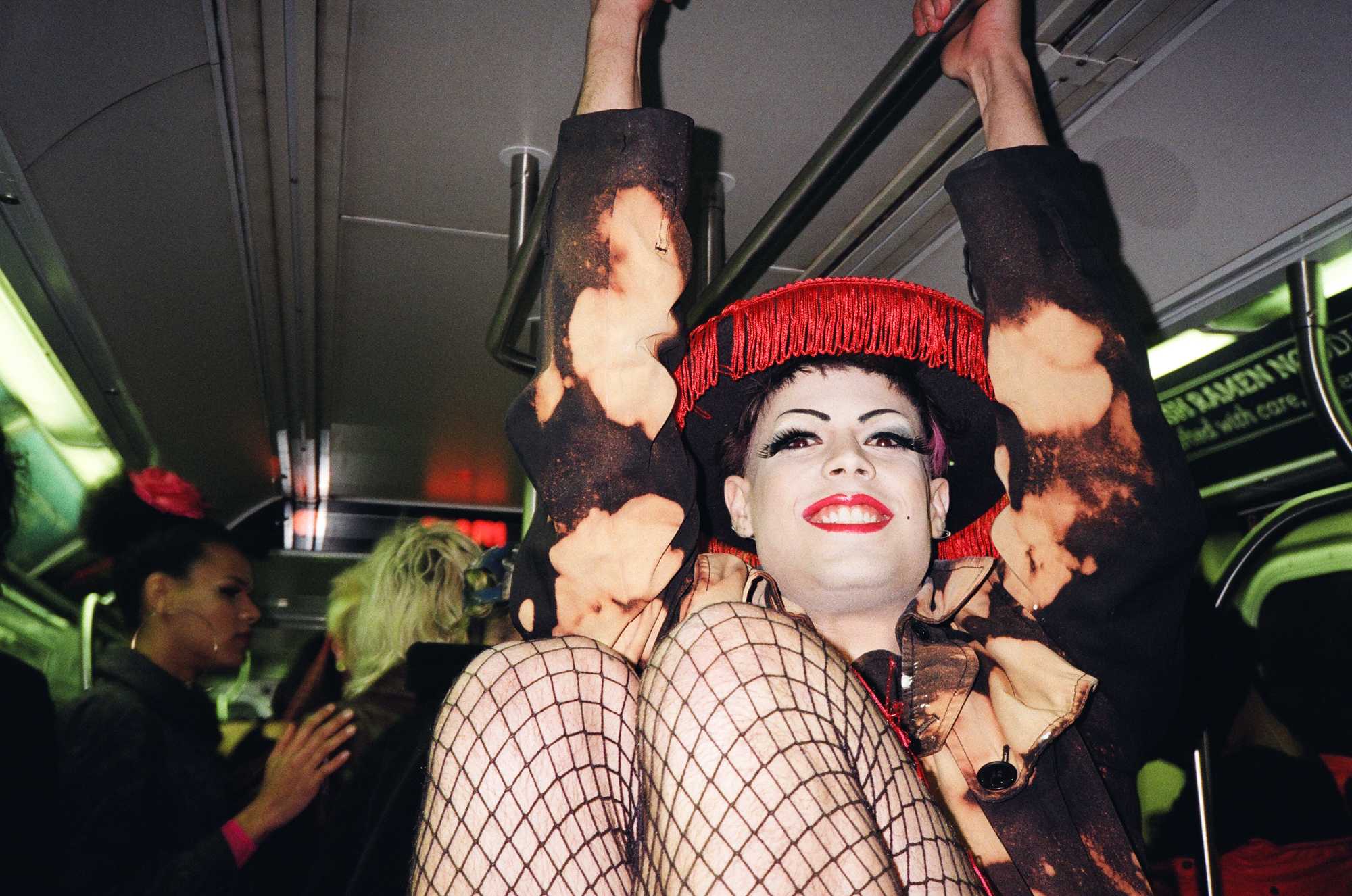
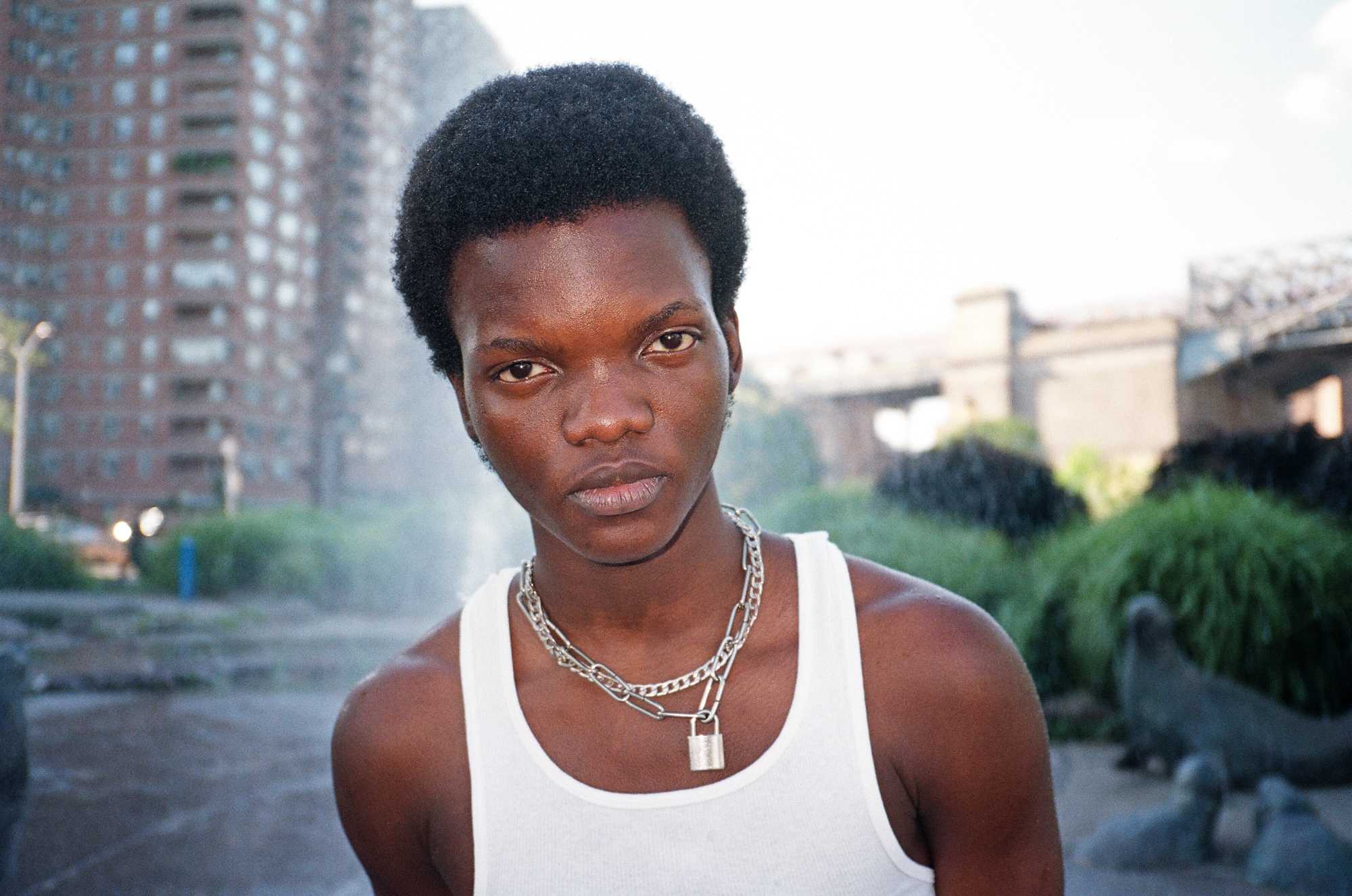
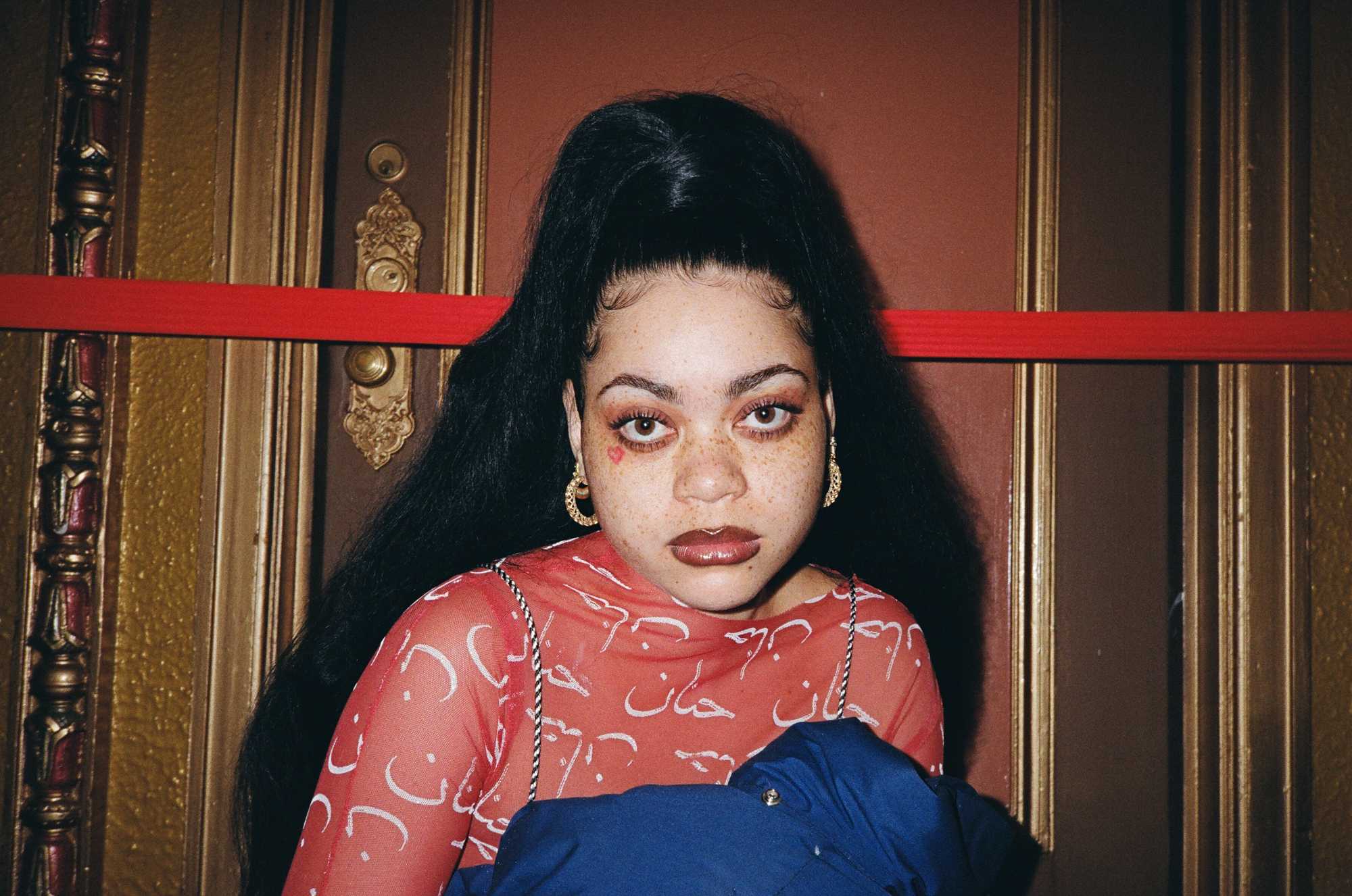
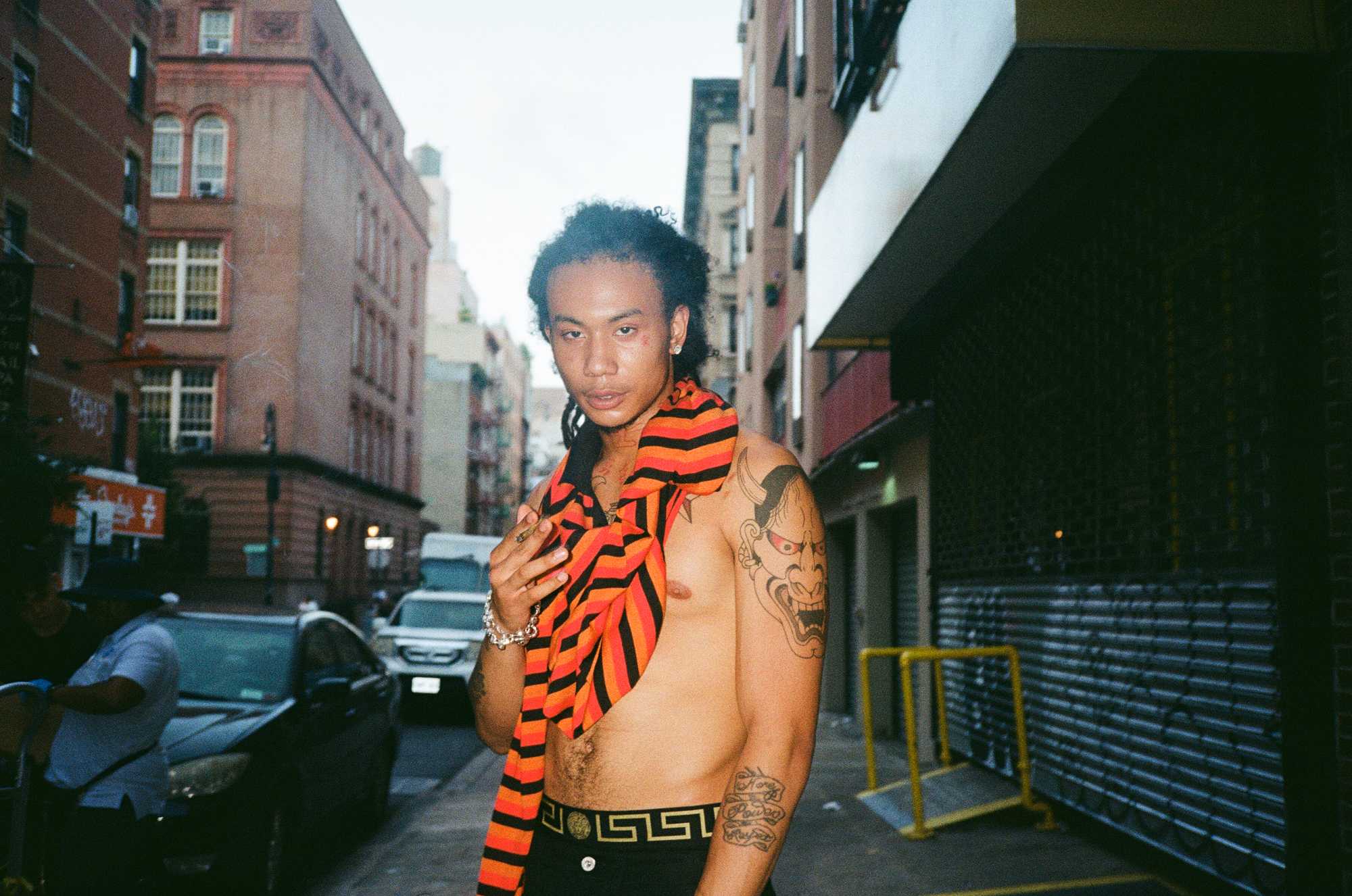
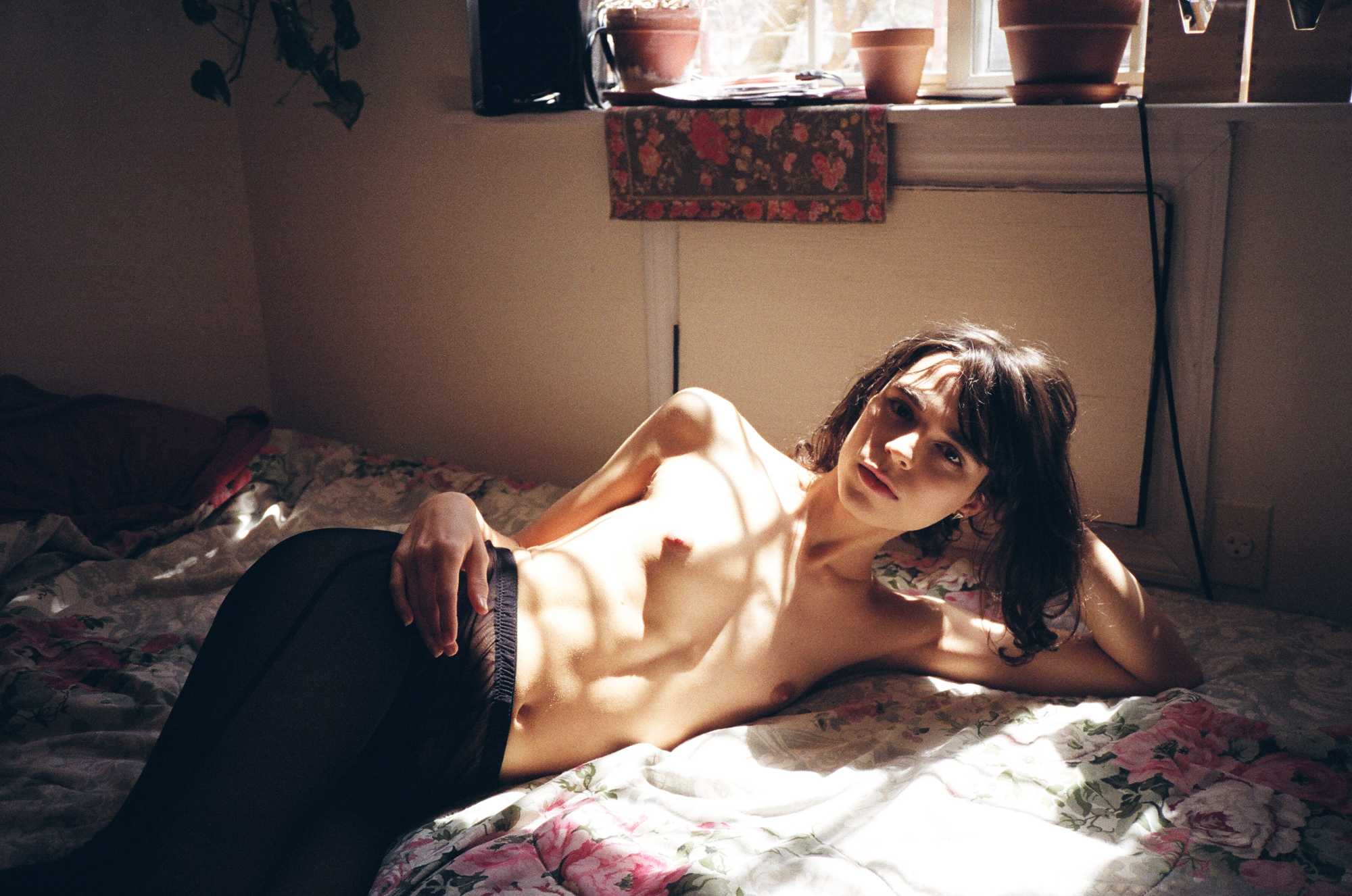
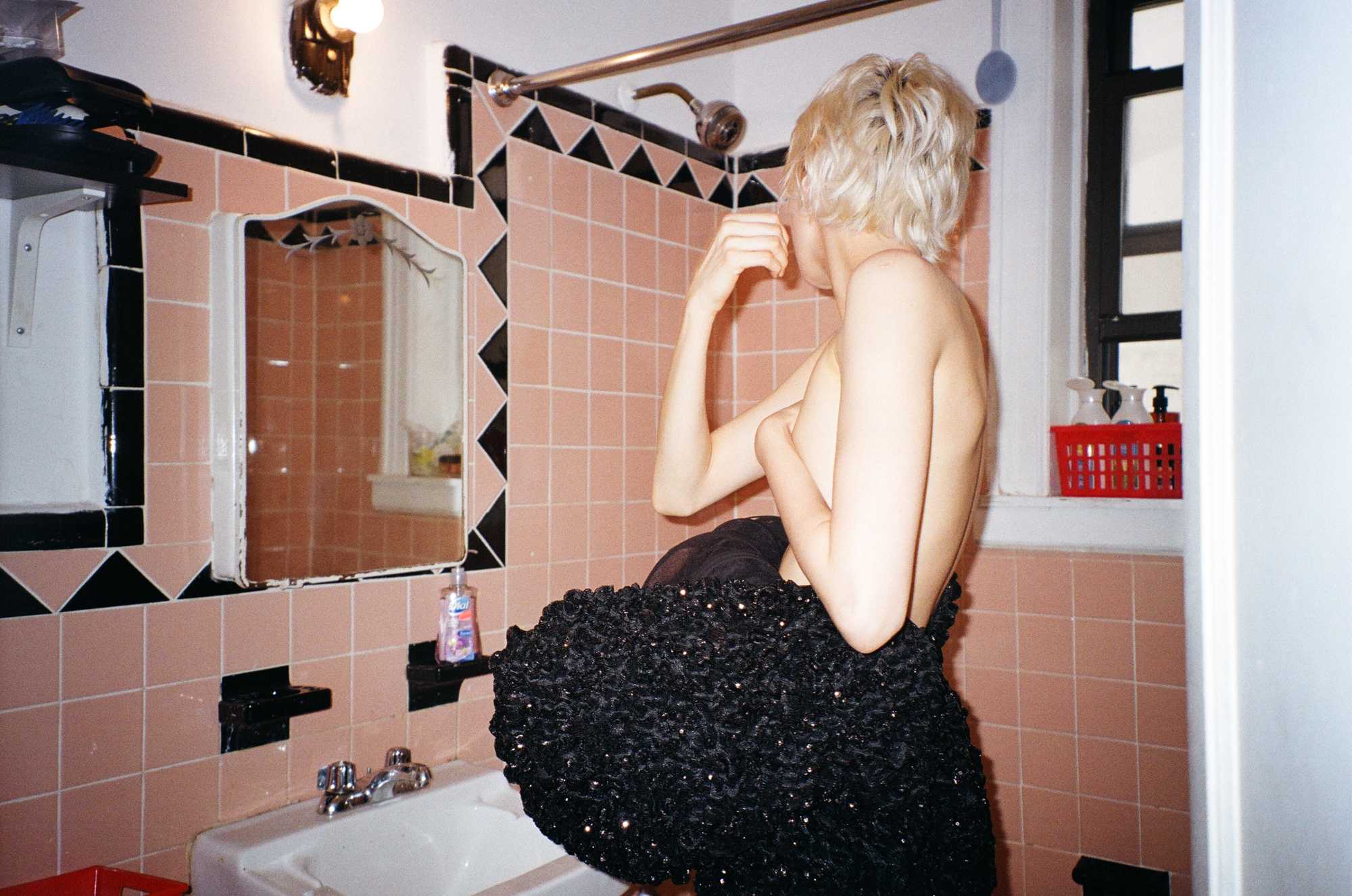

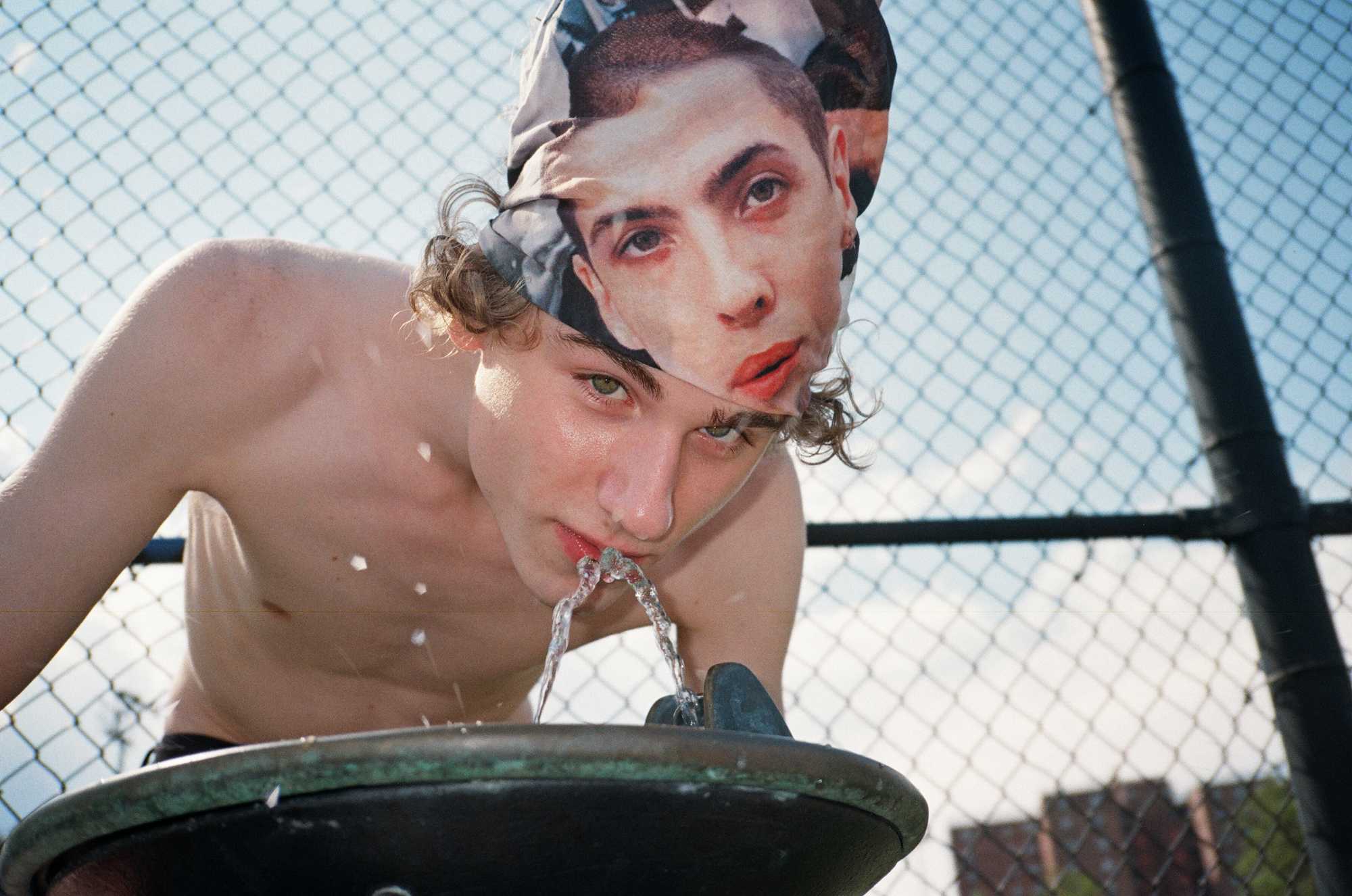
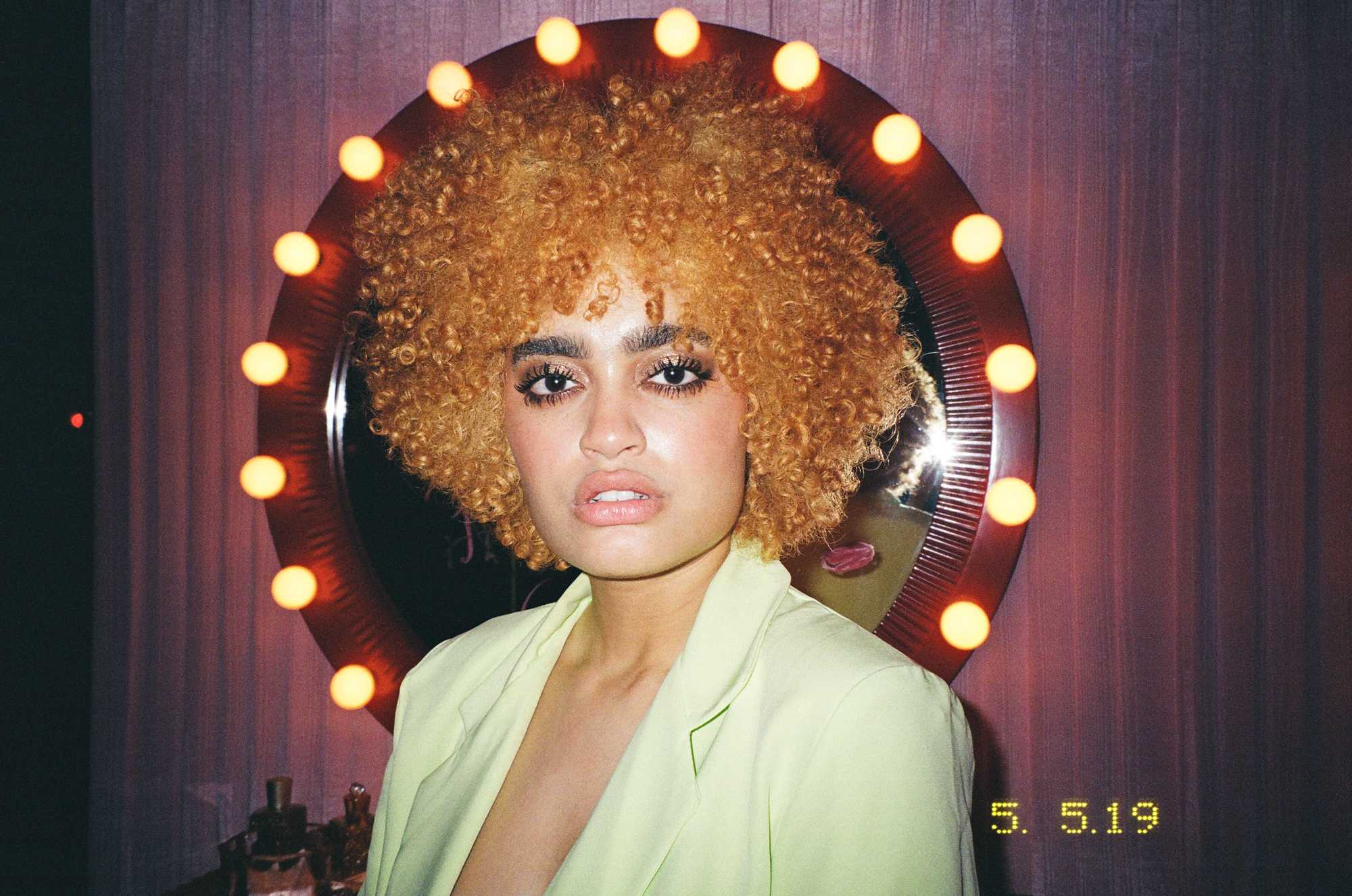

Linda Zhengová
NEW YORK NEW YORK

Hardcover, 270 x 250 mm, 176 pages
€ 38
After the success of her first book Young American (Paradigm Publishing 2019), Marie Tomanova (b. 1984, Czechia) now presents her second monograph NEW YORK NEW YORK published by Hatje Cantz. This time, her book can be considered as a fresh extension of Young American, reflecting on New York’s new generation through portraiture in the post-pandemic era. Eccentric characters with their own stories and backgrounds start to form a unique portrait of the city and a captivating vision of the future…
In an interview with GUP Magazine, Tomanova shares her passion for the city and talks about her way of engaging when creating her portraits.
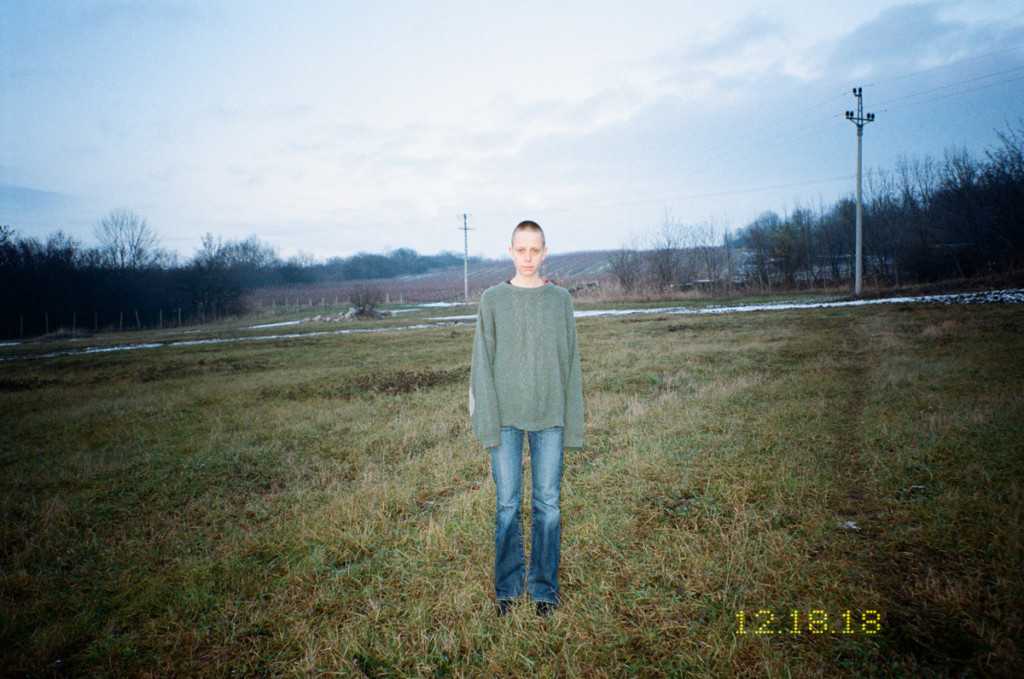
Originally, you started with self-portraiture. How did the shift towards strangers occur?
I started with self-portraiture because I really didn’t have anything else to take pictures of but myself and my surroundings. Beginning to live in a new place, a new country can be lonely and isolating, and what I had was myself. The self-portraits began as a way of seeing myself in a new place; they were also a way for me to take pictures and to spend time with myself that was precious. It is an incredibly focused and almost inward process, which eventually played an important part in forming my identity as a photographer. The shift toward others was not easy. I was a very shy child, and so to ask people to take their picture was terrifying at first, and sometimes it still is. But I also see how much I have grown and gotten more confident.
The first time I was asked to take pictures of others was for a Posture Magazine in Brooklyn and I started to see how I needed to continue shoots with others in order to put myself in the social landscape. In other words, even though meeting strangers and taking their photographs was scary and challenging at the beginning, the urge to connect and relate to others was much stronger. I needed to be with others. I wanted to build the friend circles that I left behind in my hometown and lacked so much in the US. And photography was a huge part of making that happen. With it, I had a reason. It gave me a chance to engage and be a part of something I had been missing. And it gave me a chance to see myself as a part of something, too. I was living undocumented, far, far from home and family during an incredibly challenging time in the US, and these people I saw, met and took pictures of showed me that I matter and that there is a community of people like me. That is the Young American work.
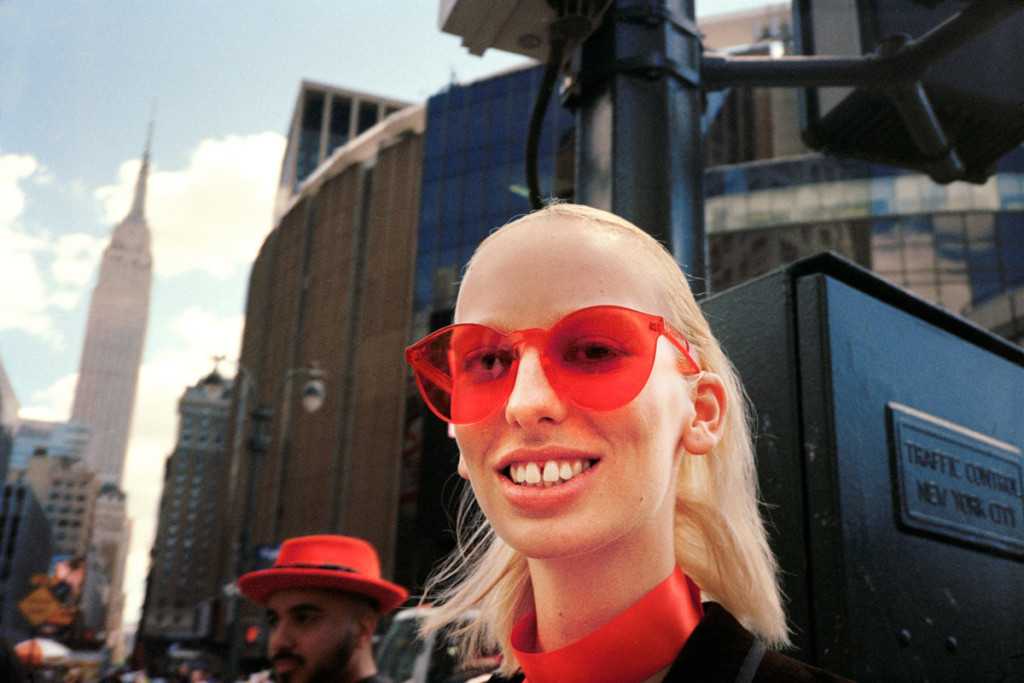
“The self-portraits began as a way of seeing myself in a new place; they were also a way for me to take pictures and to spend time with myself that was precious.”
What makes you decide to photograph a person and why in NEW YORK NEW YORK did you decide to focus on the city’s youth specifically?
In lots of ways, New York New York is an outgrowth of Young American; but in lots of ways, it is different. In Young American, I was struggling to fit in and find my version of America, free and tolerant and beautiful. Remember, I come from a place that was under communist rule for over 40 years and the idea of people’s individuality and freedom was affected by that. So, coming to America for me was about adventure and freedom, and opportunity. And at a certain point, it didn’t feel like that; it was a struggle to maintain my enthusiasm and that is what Young American is about. I was desperate to fit in and connect with others. But New York New York sort of goes beyond that. I got beyond that. Through the experience of Young American, I got more comfortable, and I think that is what New York New York is really about. It is about belonging, whereas Young American is about trying to belong, or not being sure about belonging. In Young American, I am trying to have freedom, but I am not really feeling that. There is fear and a deep need to connect closely. In New York New York, I feel freer. The cover image of Ayana is important because it shows this idea of freedom very strongly. In New York New York, I am more comfortable, and I have literally taken a step back to allow more landscape into the frame. In lots of ways New York New York is really a landscape of youth and a portrait of place. And I am a part of that. I feel that I belong.
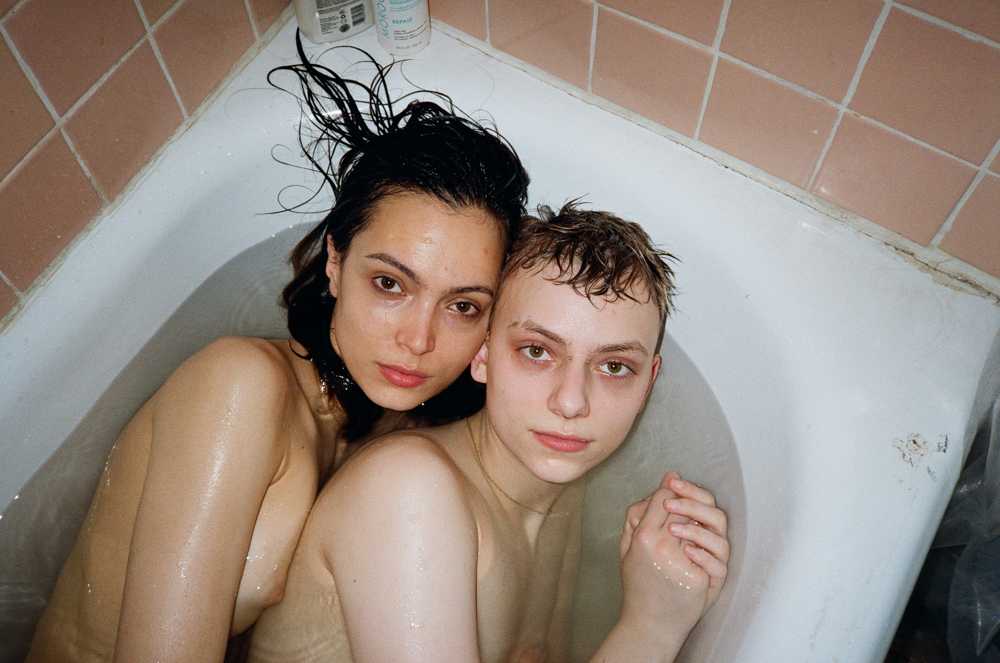
“I love everyone I photograph.”
Despite photographing many different individuals, is there someone whom you consider your muse?
I love people, so my first thought is that I love everyone I photograph. So, I want to say that everyone I photograph is a muse and an inspiration; and this is really true. If I have to name a muse it would be a “muse muse”, Kate and Odie.
In your portraiture, I see hope, freedom, and identity radiating through the people you photograph. At the same time, I sense your photographs are also a form of a reflection of yourself and whom you have become. A kind of empathic portraiture both in relation to the person portrayed and yourself. Maybe even ourselves. How do you see this relationality in your work?
I think when I take a photograph with someone it is always a photograph of me, too, even though I am behind the camera, and they are in front of it. Photographs never just happen in some pure abstract sense; they are always mediated. I love your use of empathic; the art historian Thomas Beachdel, whom I work with a lot, both in the exhibitions and books, talks about this idea of empathy in my work a lot. And I strongly associate myself and my work with it.
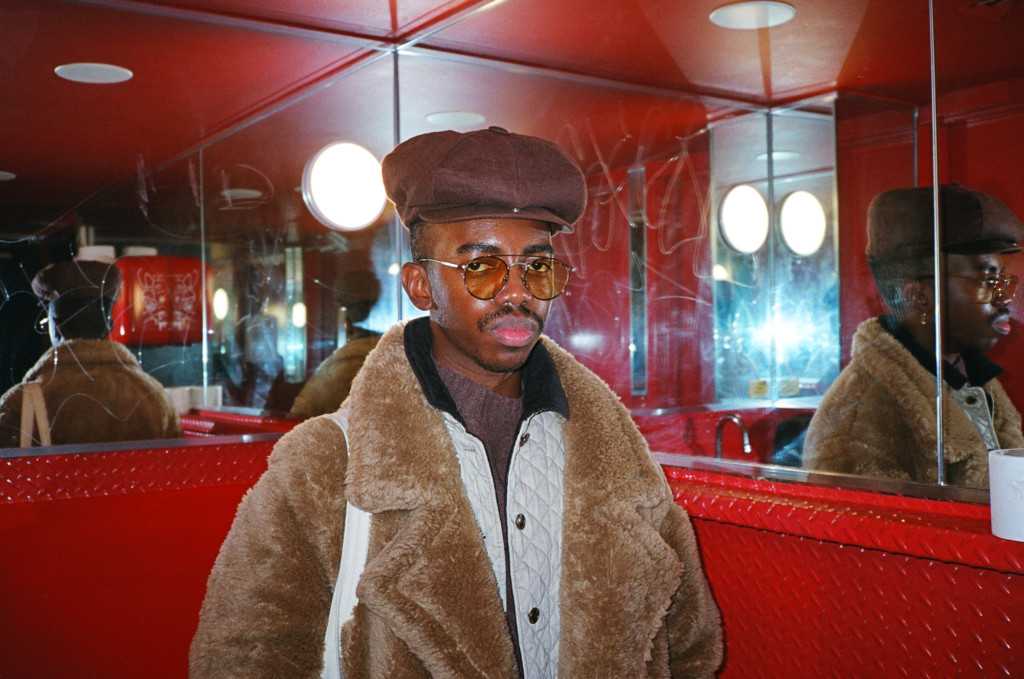
“I think when I take a photograph with someone it is always a photograph of me, too, even though I am behind the camera, and they are in front of it.”
What does a genuine connection mean for you?
I told you about how I was desperate to connect in Young American, and I still always want to connect. For me, the definition of successfully taking a photograph with someone is not the photograph itself but the experience of being with people, the time we spend together, the connection. All connection is genuine, even if brief or momentary, or fleeting.

“All connection is genuine, even if brief or momentary, or fleeting.”
Your works in New York and your home country, the Czech Republic differ very much in style and atmosphere. In NYC, it’s mostly portraiture whereas, in Czechia, you also photograph yourself and the landscape. I would say that your photographs perhaps reflect your varied attachment and connection with each place. Could you please elaborate on how you approach the two places through the medium of photography?
I want to say that I approach the two places in the same way and that portraiture and landscape intertwine for me, both in the Czech Republic and in NYC. Again, the New York New York work is just about the interpenetration of landscape and portrait. But as I think about it… I wonder if that is true, that I approach the two places the same. In December 2018 and January 2019, I returned home to my small family farm for the first time in eight years and took pictures of that experience, which was so disorienting for me; I was home, but it didn’t really feel like it anymore. This project, It Was Once My Universe was shown at Rencontres d’Arles in France in 2021 as part of the Louis Roederer Discovery Award and then travelled to Jimei x Arles International Photo Festival in China. It will be released as a book in September 2022 in NYC by SUPER LABO, a wonderful publisher from Tokyo. And the reason I say that is because It Was Once My Universe is work about going home, about being home-in Czech-but the date stamp is set to New York City time. These two places merge for me; sure, they separate and are different, but they also come together in ways that I do not expect. Maybe the difference is when I am in New York I am discovering myself and when I am in Czech, I am rediscovering myself.

At the moment, you have published your book NEW YORK NEW YORK and you are having a solo exhibition at C24 Gallery in New York. How do you reflect on the process of creating your monograph during the pandemic? And do you have a preferred way of showing this body of work?
I love working on books and exhibitions, and I love large-scale video projections that give huge visibility to the people and pictures. I love seeing how the work exists and relates in a gallery space or in a form of a book; it takes on a new shape and life of its own.
It was hard to shoot during the pandemic because everyone was distant and in masks. I felt depressed and disconnected, but I finally started shooting again in the summer of 2020, it was a crazy summer, happy and terrifying in ways. The pandemic has been hard, we had a show in October 2020 in Berlin, and it was unclear if it would open until a week before and then it shut down two weeks after, but it was still a beautiful experience-it was human, people coming together and supporting one another after months of separation.

What now?
Thomas Beachdel and I are working on the It Was Once My Universe book (SUPER LABO, 2022), and another big exhibition for 2023. I also have a site-specific installation on view at a group show Through You I See Myself at 8smička Gallery in Humpolec, the Czech Republic right now and I will be part of an exhibition called The New Portrait at Stieglitz19 Gallery in Antwerp, Belgium opening in March. I am also preparing another show for June for OFF/Format Gallery in Brno, Czech Republic. So, lots of exciting stuff!
NEW YORK NEW YORK was published by Hatje Cantz and is available here. Tomanova currently has an exhibition – Finding Magic Together – at C24 Gallery. There she is showcasing a collection of new works in her ongoing series of photographs of a new generation of New Yorkers.